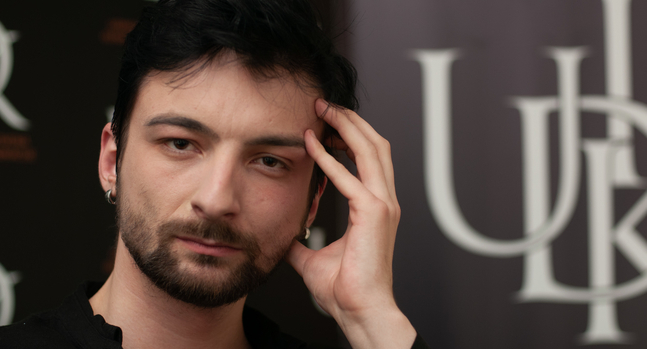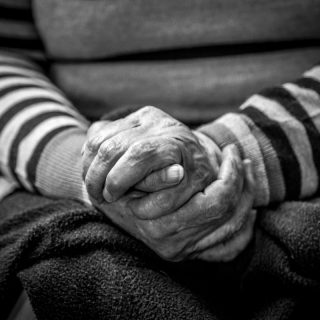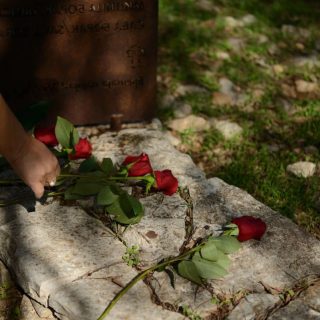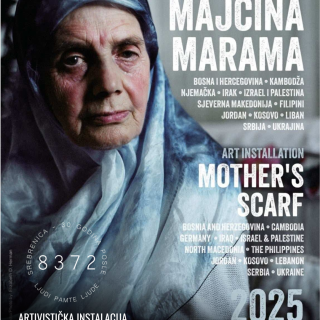Omarska is the name of a small place that would probably not have any particular meaning today, had it not been for the Yugoslav wars. It would be a village in Bosanska Krajina that you would notice only if you took the road from Banja Luka to Prijedor. However, the conflicts ensuing after the breakup of the former state turned it to one of the most infamous villages in Bosnia and Herzegovina. In 1992, Omarska was part of an organised system of deportation and detention of the non-Serb population. In addition to this place of torture, there were several other concentration camps in the region. The most infamous ones were Keraterm in Prijedor and Trnopolje near Kozarac. They were all closely connected to the concentration camp Manjača near Banja Luka.
After the war in Bosnia and Herzegovina, Omarska, Keraterm and Trnopolje became the symbols of the City of Prijedor. They were within the zone of responsibility of Simo Drljača[1]. He was killed on July 10, 1997. While he was fishing, members of the British contingent of the SFOR tried to arrest him. He had already been indicted by the Hague Tribunal. Drljača resisted. He shot at the soldiers. When they fired back, he was killed in a town Gradina near Prijedor. During the war, he had even been awarded a medal by the war criminal Radovan Karadžić. His wife claimed that he was proud of it. In Sokolac, there is a street that was named after him. At some point, the Minister of Administration and Local Self-Administration of Republika Srpska, Lejla Rešić, claimed that there was no information that the mentioned person was a war criminal and she said that he was a deserving citizen of Republika Srpska.
During the war, Simo Drljača was a member of the crisis staff and head of the Prijedor police. Given his functions, he had to know about almost anything that was happening back then in this city.
Several thousands of civilians passed through the concentration camp Omarska from the end of May until mid-August 1992. They were mostly Bosniaks, a few of them were Bosnian Croats. There were also 35 women and 28 minors. Some women were repeatedly raped. Five of them never made it alive out of this prison. Simo knew about this. He was responsible for it as well.
Detainees were kept in extremely difficult conditions. In overcrowded and stuffy rooms. They slept on the floor. Frequently on one side. There was no sufficient room to lie on their backs. They were provided no medical assistance whatsoever. They were exposed to different forms of torture: physical torture, psychological abuse, rape, different forms of sexual abuse and murder. One of the methods was also starvation. They were given food once per day at the canteen of the concentration camp. They had to run to it, eat their meal and get out in three minutes. Every attempt to go there to eat something was a risk. It was always connected to merciless beatings. Around 800 civilians did not survive this form of torture.
In addition to the concentration camp itself, the detainees from Omarska were also killed above the pit Hrastova Glavica near Sanski Most, above the pit Lisac in Bosanska Krupa and on the cliffs Korićanske stijene above Travnik. The world learned about the crimes and torture at concentration camps of Prijedor two months after they were established. From foreign journalists. Their closure started on August 06, 1992. The survivors were transferred to concentration camps Manjača and Trnopolje.
In its judgment against Miroslav Kvočka, the Hague Tribunal stated that the photos from Prijedor’s death camps were one of the reasons for the establishment of the International Criminal Tribunal in The Hague.
”In other words, there is not a single place within the concentration camp Omarska in which a detainee could feel safe or simply hope that nobody would hit him or her or that he or she would not be subject to some form of violence”, said judge Almiro Rodrigues during the reading of the judgment in the Kvočka case.
Even three decades after the war, Omarska still has not left its detainees. It is right behind the survivors. They still feel psychological and physical consequences of the abuse they were exposed to there. It is therefore a problem when the local and entity authorities deny that crimes were committed in this area after so much time.
The best example of such denial these days happened in case of Fikret Alić. He was not a detainee at Omarska. He is a survivor from Keraterm and Trnopolje. The picture of the tortured man from Kozarac from the summer of 1992 is one of the most impressive photos of the past century. A symbol of the war against Bosnia and Herzegovina. Now he has to prove to politicians that he was a concentration camp detainee. For the Ministry of Labour and War Veterans and Disabled Persons’ Protection of Republika Srpska, the above mentioned person does not possess the ”decisive evidence” to be awarded the status of a victim of war torture. Simo Drljača, on the other hand, meets all the requirements to be a deserving citizen of Republika Srpska. He deserved it as a result of a changed ethnic structure of Prijedor. The fact that Fikret was tortured is also confirmed by his photo on the cover of the US news magazine Time[2]. The authorities of Republika Srpska do not care. Not because they do not know the truth, but rather because Fikret Alić was a detainee at torture camps established by the creators of Republika Srpska. And that is the evidence as to why Fikret Alić is not, and Simo Drljača is one of its greatest heroes.
Edvin Kanka Ćudić (1988) is a Bosnian human rights advocate and best known as the leader of the Association for Social Research and Communication (UDIK), an organisation fighting for human rights and reconciliation in the former Yugoslavia.
Translation: Bjanka Pratellesi
[1] https://www.icty.org/x/cases/stakic/ind/bcs/kov-ii970313b.htm




